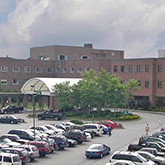Pain Management: Our Approach
Our CVMC Pain Clinic operates in collaboration with the University of Vermont Medical Center Interventional Pain Medicine Department. Our anesthesiologists are fellowship-trained in Pain Medicine. They specialize in outpatient procedures aimed to manage chronic pain.
An initial consultation, and follow-up care with your referring provider is necessary to determine the best treatment plan for your condition. We currently accept referrals from orthopedics, spine medicine, neurosurgery, and neurology.
Conditions and Symptoms We Treat
We treat a wide range of pain conditions, including:
- Arm and hand pain
- Arthritis
- Back pain
- Cancer-related pain
- Chronic muscle pain
- Head and neck pain
- Knee pain
- Neuropathic pain
- Leg pain
- Sciatica
Injections and Procedures offered at CVMC
We offer a variety of services designed to effectively treat and manage your pain. These include, but are not limited to:
- Diagnostic or therapeutic injections
- Epidural steroid injection
- Intra-articular joint injections
- Radiofrequency neurolysis (ablation)
- Sacroiliac joint (SI) joint injections
- Sympathetic and peripheral nerve blocks
- Trigger-point injections
Pain Clinic Procedures and Injections
Once your referral has been received, our office will contact you to schedule your appointment. Insurances require prior authorization for certain procedures before scheduling your appointment.
You will receive a call from a nurse that will review your appointment date and time in addition to any instructions on how to prepare for your procedure. You may be required to stop some of your medications or supplements before the procedure which will be reviewed during your phone call. You must have a driver to take you to and from your appointment, we do not allow a taxi or bus as transportation for your appointment.
Hours of Operation
Our clinic is operational five days a week with administrative and nursing staff, and we currently offer procedures and appointments with providers two days a week.
Monday - Friday: 9:30am - 5:30pm
- Anesthesiologist
- Anesthesiologist

CVMC Pain Clinic
Hours
Monday:Our clinic is operational five days a week with administrative and nursing staff, and we currently offer procedures and appointments with providers two days a week.



